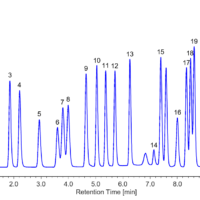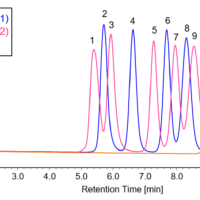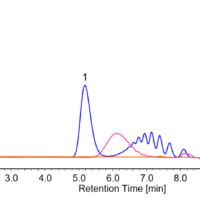Introduction
The high selectivity and high sensitivity measurement of amino acids requires the derivatization as amino acids do not absorb in UV-Vis region or fluorescence. Pre-column and post-column derivatization methods can be used for the analysis of amino acids. In the case of pre-column derivatization, the sample is derivatized in the autosampler and then separated in a C18 or similar column and detected. On the other hand, in the case of post-column derivatization, the sample is separated using an ion-exchange column or similar first, then mixed with reaction solution for derivatization and then detection.
JASCO offers several analysis systems. 1. Pre-column derivatization system using orthophtalaldehyde (OPA) for fluorescence detection, 2. Pre-column derivatization system using Dabsyl chloride for absorbance detection, 3. Post-column derivatization system using OPA for fluorescence detection and 4. Post-column derivatization system using ninhydrin for absorbance detection.
The pre-column derivatization method has many advantages such as a simple system configuration, wide selectivity of derivatization reagents, and offers a high sensitive measurement.
In this article, 18 amino acids were analyzed using OPA pre-column derivatization through the automated pre-column derivatization function of autosampler.
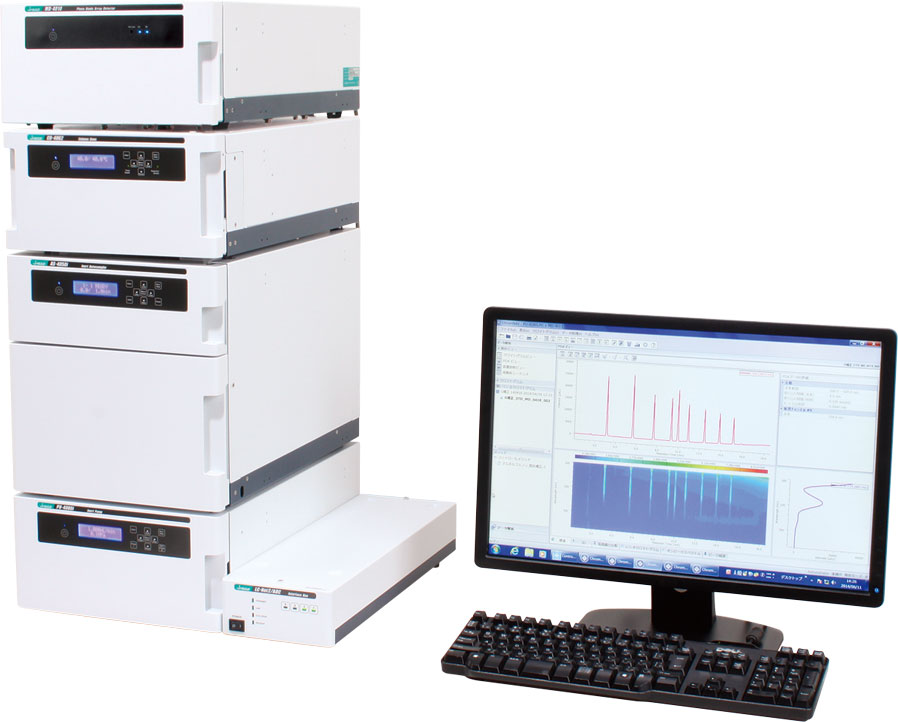
LC-4000 HPLC system
Experimental
Experimental Condition
Column: CrestPak C18S (4.6 mmI.D. x 150 mmL, 5 µm)
Eluent A: Sodium acetate buffer/methanol/THF(89/10/1)
Eluent B: Methanol/THF(90/10)
Gradient condition (A/B) : 0 min(85/15) -> 7 min(80/20) -> 19 min(56/44) -> 23 min(48/52) -> 29 min(48/52) -> 30 min(0/100) -> 35 min(0/100) -> 35.1 to 60 min(85/15), 1cycle; 60 min
Flow rate: 1.0 mL/min
Column temp.: 20 ˚C
Detection: Fluorescence detection (Ex; 345 nm, Em; 455 nm, Gain; x100)
Injection volume: 10 µL
Standard Sample: 18 amino acids 1 nmol/mL each in 0.01 M hydrochloric acid
Keywords
HPLC, Fluorescence detector, OPA pre-column derivatization, Amino acid, C18
Results
The 18 standard amino acids were distinctly separated as shown in Figure 1.
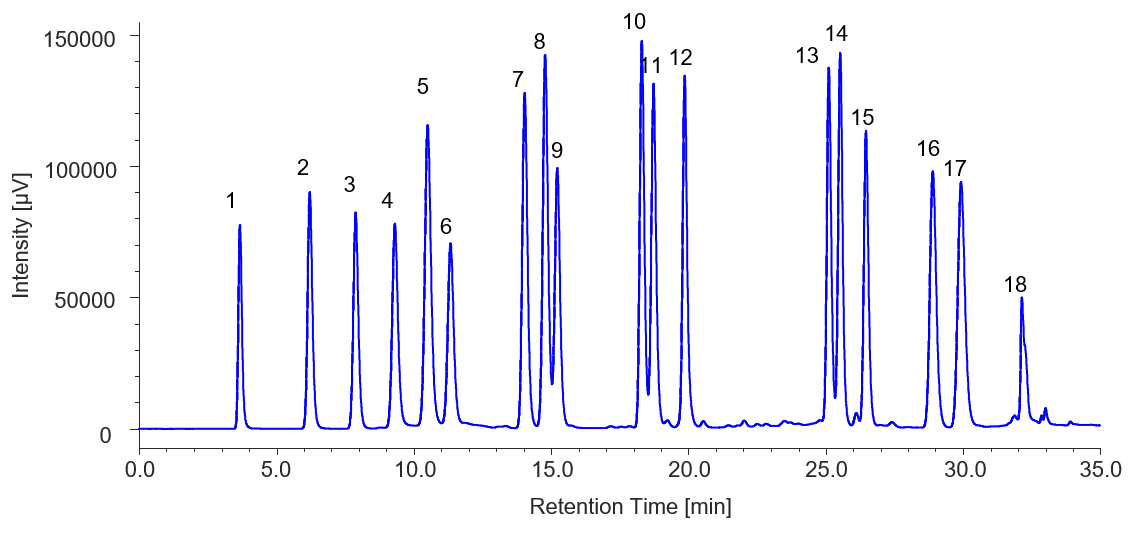
Figure 1. Chromatogram of standard mixture of amino acids (1: Aspartic acid, 2: Glutamic acid, 3: Asparagine, 4: Histidine, 5: Serine, 6: Glutamine, 7: Arginine, 8: Glycine, 9: Threonine, 10: Taurine, 11: Alanine, 12: Tyrosine, 13: Methionine, 14: Valine, 15: Phenylalanine, 16: Isoleucine, 17: Leucine, 18: Lysine)
The chromatogram of an energy drink is shown in figure 2 with the sample preparation details below.
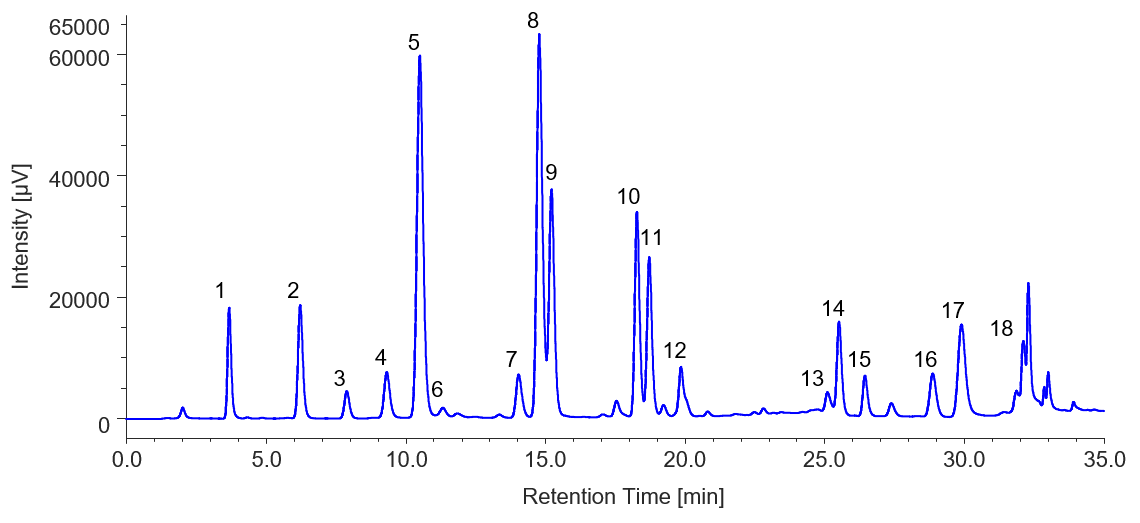
Figure 2. Chromatogram of energy drink (1: Aspartic acid, 2: Glutamic acid, 3: Asparagine, 4: Histidine, 5: Serine, 6: Glutamine, 7: Arginine,8: Glycine, 9: Threonine, 10: Taurine, 11: Alanine, 12: Tyrosine, 13: Methionine,14: Valine, 15: Phenylalanine, 16: Isoleucine, 17: Leucine, 18: Lysine)
Pretreatment method of the sample:
1) Energy drink was diluted 100 times with 0.01 M HCl.
2) Filtered with 0.2 µm membrane filter
3) Injected into HPLC

